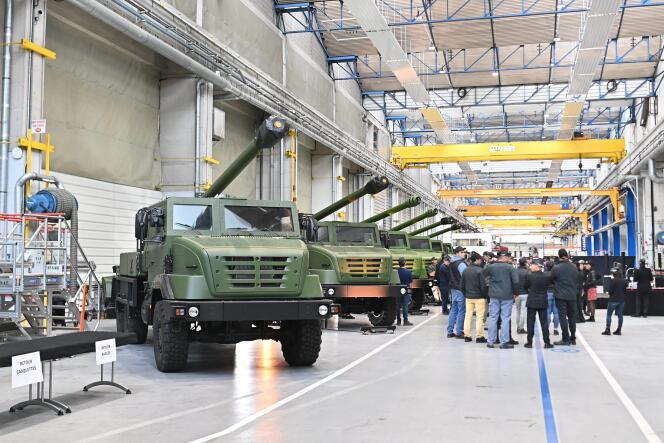


The podium wasn't set up just anywhere for the speech to be given by the French Minister of the Armed Forces Sébastien Lecornu on Monday, October 16 at the Nexter Systems plant (part of the Franco-German KNDS group) in Roanne, central France. Opposite Lecornu was a row of six brand-new Caesars pointing their 155mm tubes.
Gathered in front of them were workers, technicians and engineers from the company, some of whom were about to receive the silver national defense medal from the minister in recognition of their commitment to producing both more and faster. This is what French President Emmanuel Macron called for in June 2022 at the Eurosatory land armament show, when he declared the "war economy."
France is not at war. But in the event of a high-intensity conflict on its territory or in neighboring countries, it must be able to rapidly mobilize material and human resources. This explains the importance of the "industrial reserve" and the status granted to personnel in that sector. The war in Ukraine has confirmed how a supply of munitions and equipment can be rapidly depleted. This is an opportunity for a small-scale rehearsal and, according to the government, a ramp-up in Caesar production.
"First of all, I have to confess that we played for high stakes," said Lecornu. The war economy "wasn't just a slogan," and "our core defense industrial and technological sectors were able to start a production cycle, but one that had more risks" for the gun and its shells. This involved both industrial risks and financial commitment.
In the space of a year, Nexter has drawn €300 million from its equity to build up stocks of parts, procure raw materials, buy new machines and anticipate future orders for Caesars. Nexter will be able to meet the requirements of the next military programming law (2024-2030), which at €413 billion is larger than its predecessor.
"We've been forced to reinvent ourselves, to shake up our ways of thinking and acting, to innovate, to be bold," said Nexter Systems CEO Nicolas Chamussy. The Roanne site, which grew from 850 employees in 2018 to its current workforce of more than 1,500, works on the Scorpion program, a major operation to replace the army's armored vehicles. It will involve the delivery of 300 Jaguars, 1,800 Griffons and 2,000 Servals by 2035. Their production has been optimized with the introduction of assembly lines inspired by the automotive industry. Previously assembled on a single station, the armored vehicle now moves from one station to another, with specific operations at each stage. The aim is to increase production from 300 to 450 vehicles a year by 2025.
You have 56.05% of this article left to read. The rest is for subscribers only.
